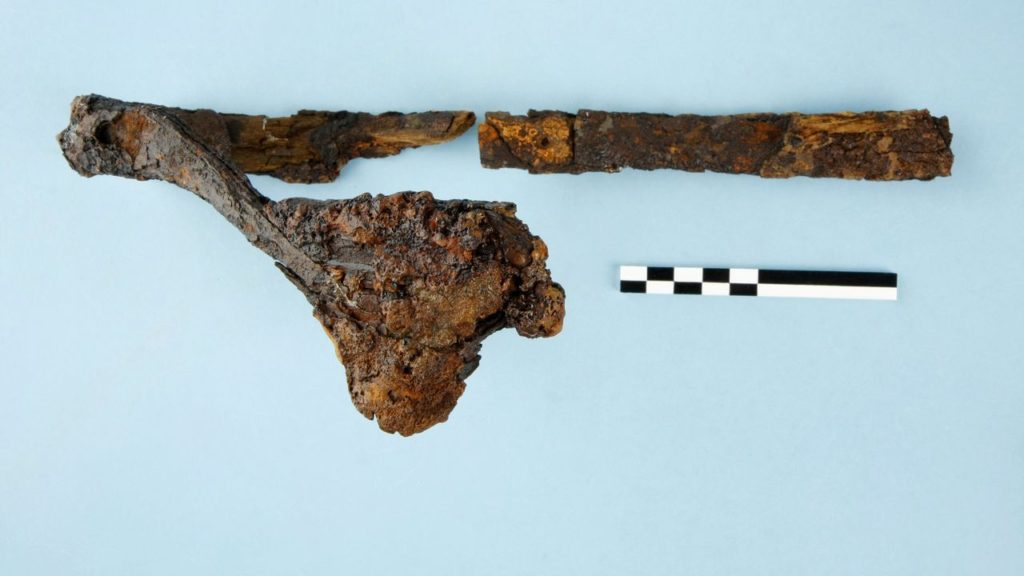For the first time in Flanders, a hernia truss has been excavated. This already happened 15 years ago in the city of Aalst, but it took until now for archaeologists to discover the story behind the object.
In 2004, major excavation works started at the Hopmarkt in Aalst, in the East-Flanders province, where archaeologists worked for two years and found the hernia truss where medieval houses and a monastery used to be.
"It is a kind of belt that was used for people with inguinal (groin) hernia. Patients with this condition have a cavity in the abdominal wall through which intestines bulge out," Jan Moens of the Agency for Immovable Heritage said on Flemish radio.
"The belt consists of metal, leather and a pressure ball that keeps everything in place at the site of the wound."

Credit: Flemish Agency for Immovable Heritage
The trusses have been used for centuries, with doctors and surgeons even bringing all kinds of different models on the market, according to him.
As an archaeological find, however, they are rather rare. "In the Netherlands, a few have turned up, but this is a first for Flanders."
Additionally, the find is even more special, because the belt's owner was found as well, as if by chance.
"At the moment, we are conducting another study in which we are analysing the Codex 156. That is a very old book that is in the library of the University of Leuven," Moens said. "It also contains the accounts of the Carmelite monastery of Aalst from 1738 to 1796. And the name of brother Patrick, the patient who suffered from an inguinal hernia, also appears in it."
In the Codex, there is a first mention under the year 1754, when the monastery paid five nickels for the belt
"Such a belt is not expensive when you compare it to the other costs in the list, it cost about as much as a chicken back then," he said.
A new report was found in 1758, then explicitly mentioning the name of monk Patrick. "It is very special that so many years later and after further research, we can even put a face to an 18th century find about which we were in the dark for a long time."
A longer article on monk Patrick's hernia truss was published by Moens in Ex Situ, the magazine of the Forum for Flemish Archaeology, and can be read (in Dutch) here.
The Brussels Times

